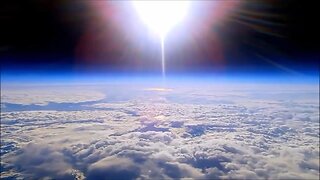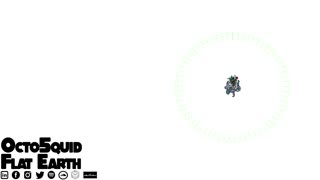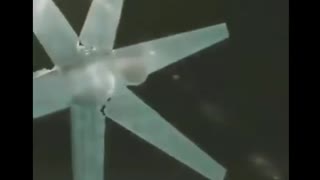Premium Only Content

The Flat Moon Over the Flat Earth
NASA and modern astronomy maintain that the Moon is a solid, spherical, Earth-like habitation which man has actually flown to and set foot on. They claim the Moon is a non-luminescent planetoid which receives and reflects all its light from the Sun. The reality is, however, that the Moon is not a solid body, it is clearly circular, but not spherical, and not in any way an Earth-like planetoid which humans could set foot on. In fact, the Moon is largely transparent and completely self-luminescent, shining with its own unique light.
The Sun’s light is golden, warm, drying, preservative and antiseptic, while the Moon’s light is silver, cool, damp, putrefying and septic. The Sun’s rays decrease the combustion of a bonfire, while the Moon’s rays increase combustion. Plant and animal substances exposed to sunlight quickly dry, shrink, coagulate, and lose the tendency to decompose and putrify; grapes and other fruits become solid, partially candied and preserved like raisins, dates, and prunes; animal flesh coagulates, loses its volatile gaseous constituents, becomes firm, dry, and slow to decay. When exposed to moonlight, however, plant and animal substances tend to show symptoms of putrefaction and decay.
In direct sunlight a thermometer will read higher than another thermometer placed in the shade, but in full, direct moonlight a thermometer will read lower than another placed in the shade. If the Sun’s light is collected in a large lens and thrown to a focus point it can create significant heat, while the Moon’s light collected similarly creates no heat. In the "Lancet Medical Journal,” from March 14th, 1856, particulars are given of several experiments which proved the Moon's rays when concentrated can actually reduce the temperature upon a thermometer more than eight degrees.
So sunlight and moonlight clearly have altogether different properties, and furthermore the Moon itself cannot physically be both a spherical body and a reflector of the Sun’s light! Reflectors must be flat or concave for light rays to have any angle of incidence; If a reflector’s surface is convex then every ray of light points in a direct line with the radius perpendicular to the surface resulting in no reflection.
-
 22:13
22:13
EricDubay
22 days agoBest High-Altitude Flat Earth Footage
3.29K16 -
 4:59
4:59
0cto5quid
3 years ago $0.09 earnedFlat Earth
5433 -
 14:38
14:38
Op Freedom
3 years agoA FLAT Earth Presentation
3.7K48 -
 1:29
1:29
Op Freedom
3 years agoFlat Earth Hungary
2.54K18 -
 4:32
4:32
TruthStream with Joe and Scott
5 days agoTo Unite Music Video 2025 in 432 HZ written by Joe Rosati & Steve Collins. featuring Stephen Tenner, Kristen Capolino and KC Sunshine. Produced by Lewis Herms
20.1K13 -
 3:09:13
3:09:13
Joker Effect
10 hours agoFIRST EVER AMATEUR BOXING EVENT STREAMED ON RUMBLE! BOUGHT TO YOU BY WOLFSDEN BOXING!
57.3K9 -
 3:33:13
3:33:13
Barry Cunningham
6 hours agoTHE DOGEFATHER & THE DON! HOW ELON MUSK & PRESIDENT TRUMP ARE SAVING AMERICA!
95.7K51 -
 LIVE
LIVE
Phyxicx
5 hours agoGetting ready for $350 tournament! - 5/31/2025
56 watching -
 LIVE
LIVE
Tommy's Podcast
3 hours agoE742: Atomic Piledriver
523 watching -
 3:54:51
3:54:51
Mally_Mouse
13 hours agoSpicy Saturday!! - Let's Play: Group Games w/Friends!
76.4K3